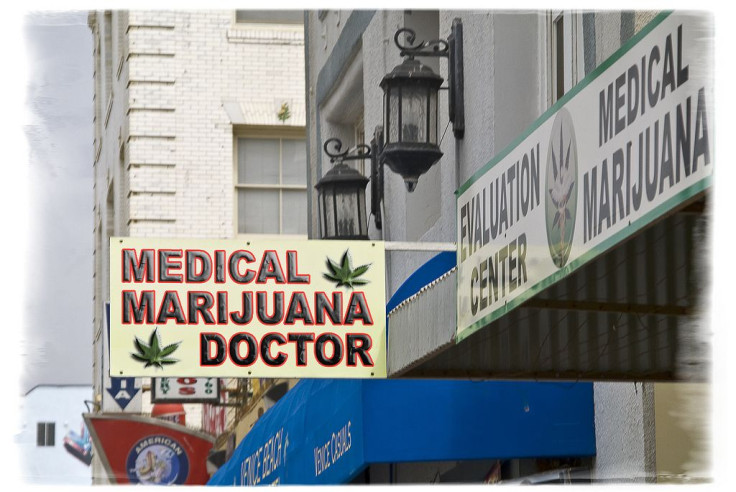Medical Marijuana Ads May Influence Teens To Smoke Pot; Or Maybe It's Just Exposure To The Drug

Between those who support medical marijuana and those who don’t, there’s at least one thing both groups can agree on: preventing teens from getting their hands on it as much as possible. The possible effects of marijuana on teen health are just too risky. But how can we lower their chances of trying the drug? A new study from the RAND Corporation suggests limiting the number of ads they’re exposed to may be one route. But it’s possible that limiting exposure to the drug altogether may be best.
Twenty-three states and the District of Columbia have already legalized medical marijuana, and some have allowed medical marijuana ads on billboards, TV, the Internet, and in newspapers. Researchers from RAND looked at how exposure to these ads, as well as to the obvious displays in dispensary storefronts, affected 8,214 young teens’ (average age 13) perceptions of weed and their inclination to try it. As they expected, teens who were exposed to the marijuana ads were twice as likely to say they intended to use the drug in the future.
“As prohibitions on marijuana ease and sales of marijuana become more visible, it’s important to think about how we need to change the way we talk to young people about the risks posed by the drug,” said Elizabeth D’Amico, lead author of the study and a senior behavioral scientists at RAND, in a statement. “The lessons we have learned from alcohol — a substance that is legal, but not necessarily safe — may provide guidance about approaches we need to take toward marijuana.”
Preventing marijuana use among teens is a top concern because the brain undergoes drastic changes until a person’s early- to mid-20s. Levels of gray matter fluctuate, different parts of the cortex mature, and neuronal connections are strengthened. But studies have shown using marijuana may alter this development, affecting teens’ abilities to think critically, memorize short- and long-term events, and process information effectively. Some research has even suggested it can trigger schizophrenia-like symptoms in people who are already predisposed to the disease.
The researchers said it was unclear whether teens who were already exposed to marijuana paid more attention to the ads or if the ads influenced the teens attitudes toward the drug. We’re willing to bet it’s simply exposure to the drug though, because even if the ads are negative, teens are still likely to view marijuana favorably. This was proven in a study conducted by Texas State University, which found that older teens who watched anti-marijuana PSAs — and already had an aversion to marijuana — ended up with less negative attitudes toward it. By comparison people with negative attitudes toward tobacco still held the same attitudes after watching anti-tobacco PSAs.
Regardless of whether it’s advertisements or merely being exposed to marijuana that encourages a teen to use it, the key to prevention, D’Amico said, is in educating teens “about how medical marijuana is used, while also emphasizing the negative effects that marijuana can have on the brain and performance.”
Source: D’Amico EJ, Miles J, Tucker J. Gateway to Curiosity: Medical Marijuana Ads and Intention and Use During Middle School. Psychology of Addictive Behaviors. 2015.



























